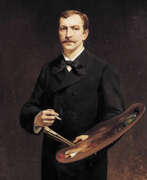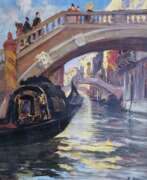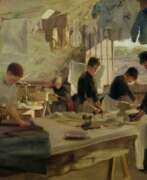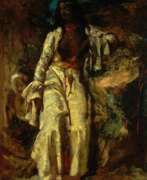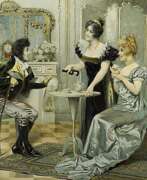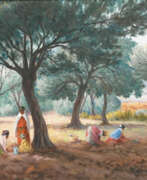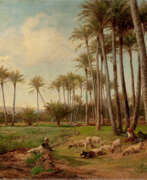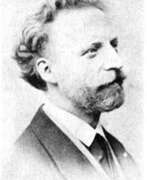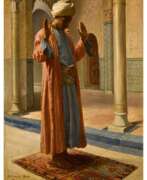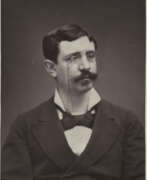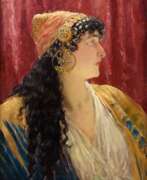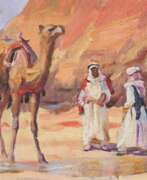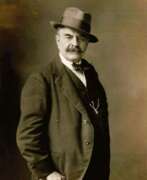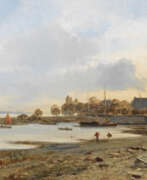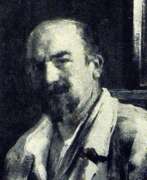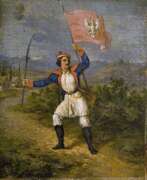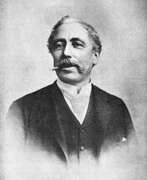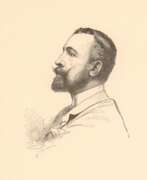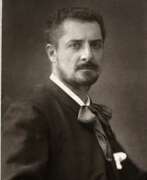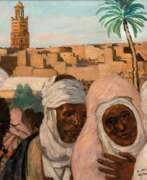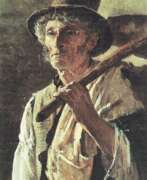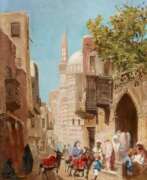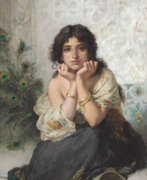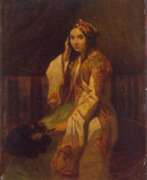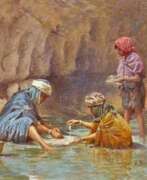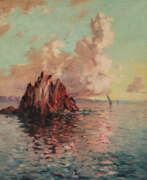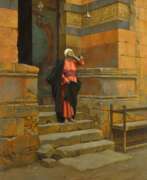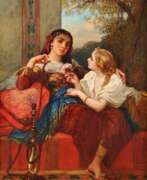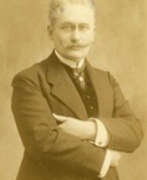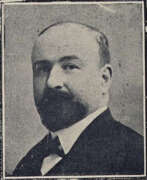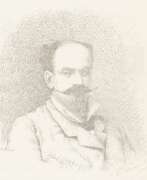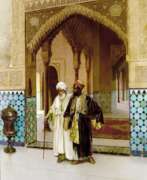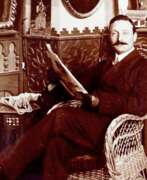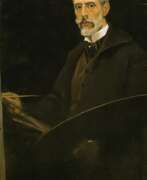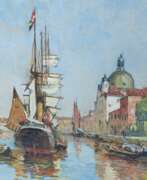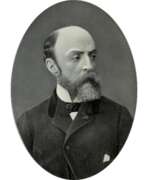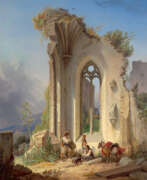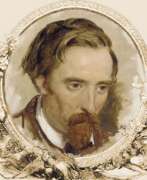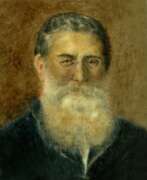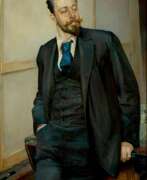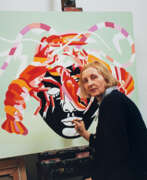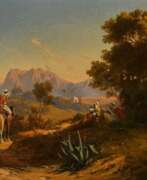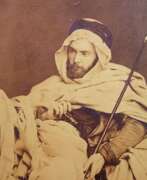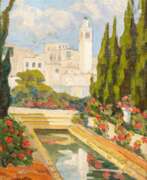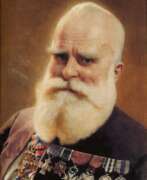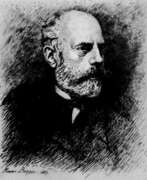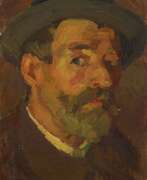Orientalism
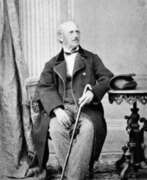

Hermann Anschütz was a German painter of the 19th century. He is known as a painter and teacher who belonged to the Düsseldorf School of painting. He was a professor at the Munich Academy of Fine Arts.
Anschütz painted mythological and historical subjects, as well as landscapes and portraits. A number of his canvases were devoted to oriental themes. In 1860 he was one of the founders of the Munich Christian Art Association.
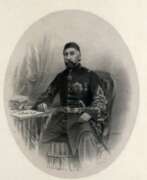

Muchir Arif Pasha was a Turkish officer, government official and artist.
He participated in the battles against the Greeks at Athens and Euboea (1826-1828), and in Syria against Mehmet Ali. His career included a number of missions for the sultan and his appointment as governor of the province of Silistria in 1861. Arif Pasha also made interesting sketches.
In Paris in 1863, an album entitled "Ancient Costumes of the Ottoman Empire" with drawings by Arif Pasha was published. It is an illustrated overview of the costume worn at the court of the Ottoman Empire, with text in French and Turkish. Ministers, government officials, and officers (including intelligence) are shown in full attire.
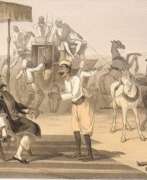

George Franklin Atkinson was a British Army officer and artist.
Atkinson was an officer in the East India Company's Bengal Engineer Service. He published two picture books depicting colonial life in India in the mid-nineteenth century.
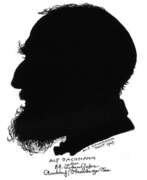

Alfred August Felix Bachmann, a distinguished German Orientalist painter, carved a niche for himself in the realm of art with his exceptional talent. His journey in art began post-high school, under the tutelage of Max Schmidt at the Königsberg Academy of Art, eventually leading him to explore and derive inspiration from various European locales. Bachmann's dedication to his craft saw him making Munich his home from 1891 onwards, immersing himself in the city's vibrant art scene.
Bachmann's oeuvre primarily showcases his profound connection with coastal landscapes, though his versatility also shines through in his depictions of prairies and hilly terrains. His participation in the prestigious exhibitions at the Glaspalast in Munich since 1887 underscores his prominence in the art world. Notably, his artistic excellence was recognized with a gold medal at the Glaspalast exhibition in Berlin in 1913, an Austrian Grand Gold Medal Service Award in 1917, and the German Service Cross in 1952, attesting to his significant contributions to art.
His artistic journey included an intriguing role appointed by Otto Erich Hartleben to the "Halkonian Academy for Unexplored Sciences," where Bachmann created a poignant last portrait of Hartleben, titled "Last Greetings." This work, among others, demonstrates Bachmann's deep intellectual and emotional engagement with his subjects.
Bachmann's legacy is celebrated in many esteemed collections, evidencing the lasting impact of his works on the art community and collectors alike. His contributions to Orientalist painting and his unique ability to capture the essence of his subjects have solidified his place in art history.
For art collectors and enthusiasts keen on exploring the works of Alfred August Felix Bachmann, signing up for updates can enrich your collection with pieces that not only exemplify exquisite craftsmanship but also carry historical significance. Stay informed about new sales and auction events dedicated to Bachmann's art by subscribing for updates today.
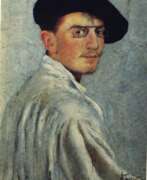

Leon Bakst (Russian: Лев Самойлович Бакст) was a prominent Russian painter and stage designer, celebrated for his innovative contributions to the world of art and theater. Born in the late 19th century, Bakst became a central figure in the cultural renaissance that swept through Russia and Europe, leaving an indelible mark on the visual and performing arts.
Bakst's work is distinguished by its rich use of color, intricate patterns, and imaginative compositions, which brought to life the exotic and often fantastical themes of the ballets and operas for which he designed. His association with the Ballets Russes, a groundbreaking ballet company that performed across Europe and America, solidified his reputation as a visionary artist. The costumes and sets he created for productions like "The Firebird" and "Scheherazade" were celebrated for their creativity and exoticism, influencing not only the world of theater but also fashion and interior design.
His art extends beyond the stage, with paintings and illustrations that capture the same vibrancy and innovation found in his theatrical work. Museums and galleries around the world, including the State Russian Museum in St. Petersburg and the Metropolitan Museum of Art in New York, house his works, allowing art lovers to experience the magic of Bakst's creations.
For collectors and experts in art and antiques, Leon Bakst's work offers a unique glimpse into a transformative period of cultural history, where the boundaries of art and performance were reimagined. His legacy continues to inspire and captivate, making his pieces highly sought after in the art world.
We invite enthusiasts and collectors to sign up for updates on new product sales and auction events related to Leon Bakst. This subscription ensures you remain informed about opportunities to acquire pieces connected to this extraordinary artist's legacy, without any overbearing commitments. Join us in celebrating the enduring impact of Leon Bakst's art and design.
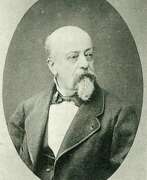

Henri Charles Antoine Baron was a French painter, printmaker and illustrator.
Henri studied painting with Jean Gigoux (1806-1894) and traveled with him in Italy. The Baron returned with a large number of sketches, which became a constant source of inspiration for many of his later works. He first successfully exhibited at the Paris Salon in 1840. Baron was subsequently honored with several gold medals for his work at this Salon.
Henri Baron was the author of historical scenes of social life, oriental and allegorical compositions. He painted charming Italian genre scenes and depicted Parisian social life. The artist was also recognized as a skilled watercolorist, exhibiting his watercolors continuously at the Society of French Watercolorists since 1879. Baron also illustrated works by Balzac, Boccaccio, J. J. Rousseau, Perrault's fairy tales and many others.
In addition, in collaboration with his friend F.-L. France and Célestin Nantey (1813-73), he published a three-volume edition of Ancient and Modern Painters (1848-62), a collection of lithographs based on the works of modern artists.
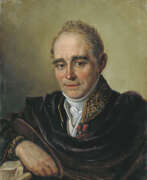

Vladimir Lukich Borovikovsky (Russian: Влади́мир Луки́ч Боровико́вский), a distinguished Russian artist of Ukrainian Cossack origin, was renowned for his mastery in portrait painting and ecclesiastical art. Born in Mirgorod, now Myrhorod, Ukraine, in 1757, Borovikovsky lived in Ukraine until the age of 31 before moving to St. Petersburg. His journey into the art world began under unusual circumstances when Empress Catherine II was impressed by his allegorical paintings, leading him to relocate to Saint Petersburg and adopt the more aristocratic surname Borovikovsky.
Borovikovsky's work epitomizes the sentimentalism era, capturing the essence and inner beauty of his subjects with a unique sensitivity and elegance. His ability to convey the nuanced emotions and dignified personalities of his sitters through intimate and detailed portraiture earned him acclaim, particularly among the Russian imperial family and nobility. Throughout his career, he produced about 500 portraits, with 400 surviving today, including notable figures such as Catherine II, Paul I, and Alexander Kurakin, as well as the celebrated "Portrait of M.I. Lopukhina".
In his later years, Borovikovsky's focus shifted towards religious painting, contributing significantly to the Kazan Cathedral and other ecclesiastical sites in St. Petersburg. Despite facing challenges, including court intrigues and a personal struggle with mental discord and alcohol, he left a lasting legacy through his art, which remains highly regarded for its depth, sincerity, and technical skill.
Collectors and experts in art and antiques cherish Borovikovsky's work for its historical significance and profound emotional resonance. His paintings, a fusion of classicist and sentimental styles, continue to inspire and captivate audiences, preserving the legacy of one of Russia's most gifted portraitists.
For updates on exhibitions and auction events featuring Vladimir Lukich Borovikovsky's work, sign up for our newsletter. Stay informed about the latest discoveries and opportunities to add a piece of history to your collection.


Gustave Clarence Rodolphe Boulanger was a French painter renowned for his classical and Orientalist themes. He was born in Paris and became an accomplished academic artist, earning accolades such as the Prix de Rome in 1849.
Gustave Boulanger's paintings often focused on historical subjects, with influences from Greek and Roman mythology, as well as Orientalism, particularly Middle Eastern themes. He also depicted scenes of daily life in ancient civilizations and had a knack for blending the ancient with the modern. Notable works by Boulanger include "Répétition théâtrale dans la maison d’un poète romain" (1855), presented at the Salon of 1855, which later inspired the Pompeiian palace inauguration. His style was known for its theatricality and ability to bridge the past with contemporary aesthetics.
Some of his significant works are housed in various museums and galleries, including the British Museum, the Art Institute of Chicago, and the Hermitage Museum. Examples of his works include "The Flute Concert," "The Slave Market," and "Theatrical Rehearsal in the House of an Ancient Roman Poet".
Gustave Boulanger also played a role in the cultural landscape of his time, teaching at the Académie Julian, where he influenced a generation of artists. His contributions to art and his ability to capture the spirit of different eras continue to be celebrated by collectors and experts in art and antiques.
If you are interested in updates on Gustave Boulanger-related auctions and sales, consider subscribing to a newsletter that provides such information. This subscription is designed solely for alerting you to new product sales and auction events related to Boulanger's work, without any additional promotional content.
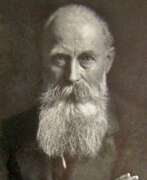

Eugen Felix Prosper Bracht was a German landscape painter.
A late Romanticist painter, Bracht was known for his moody landscapes and coastal scenes in North Germany, and began a sketching trip through Syria, Palestine and Egypt from 1880 to 1881. In 1882, he became a Professor of Landscape Painting at the Prussian Academy of Arts.
Later, Bracht became a representative of German Impressionism.
In 1901, he obtained a teaching position at the Dresden Academy of Fine Arts that he held until 1919.
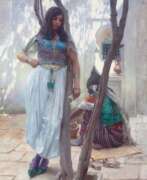

Ferdinand Max Bredt was a German orientalist painter. He traveled extensively, including Italy, Greece, Turkey, and Tunisia, and created a series of paintings of harems and odalisques as well as landscapes and academic paintings.


Frederick Arthur Bridgman was an American artist. He was known for his paintings in the Orientalist style.
Frederick Arthur Bridgman studied art at the Brooklyn Art Association and the National Academy of Design in New York. In 1866 he went to Paris to continue his studies at the École des Beaux-Arts. There he worked in the studio of Jean-Léon Gérôme, who at the time was a leading Orientalist painter. Bridgeman painted scenes of everyday life in the area, as well as historical and religious subjects. His paintings were notable for their vivid colours, attention to detail and dramatic compositions.


Jean Brindesi was an Italian-born Turkish watercolorist.
Brindesi lived in Constantinople during the reign of the Abdülmekids (1831-1861) and worked mainly as a watercolorist but also did lithography. In Paris in 1855, the first album of lithographs based on his drawings was published, featuring Turkish statesmen and military figures and their costumes. And in the second, entitled "Souvenirs of Constantinople" (1855-60), Jean Brindesi conveys the atmosphere of everyday life in Istanbul. The drawings in the second album are remarkable in that these genre scenes are depicted by a local artist who knew the intricacies of these subjects.
The originals of these works are kept in the Topkapi Palace Museum and Istanbul University.
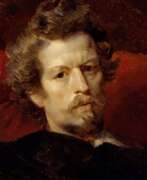

Karl Pavlovich Bryullov (Russian: Карл Па́влович Брюлло́в), a distinguished Russian artist, emerged as a pivotal figure in the world of 19th-century art, blending Western European Romanticism with his Russian heritage to create works that continue to captivate audiences today. His mastery in painting and architecture set him apart, making him a celebrated figure not just in Russia, but across Europe.
Bryullov's acclaim primarily stems from his remarkable ability to infuse his paintings with vibrant life and emotion, a testament to his profound understanding of human expression and the dramatic interplay of light and shadow. His most famous work, "The Last Day of Pompeii," exemplifies this skill, showcasing an epic narrative filled with vivid detail and emotional depth. This masterpiece, which is housed in the State Russian Museum in St. Petersburg, has garnered international praise for its innovative approach to historical painting, merging accuracy with dramatic storytelling.
Beyond "The Last Day of Pompeii," Bryullov's portfolio includes a range of subjects, from majestic portraits to serene landscapes, each bearing his signature blend of realism and romanticism. His works are featured in prestigious galleries worldwide, serving as a testament to his enduring influence on the art world. For collectors and experts in art and antiques, Bryullov's oeuvre offers a fascinating glimpse into the evolution of 19th-century European painting, marked by a unique intersection of culture, art, and history.
For those intrigued by the enduring legacy of Karl Pavlovich Bryullov and his contributions to painting and sculpture, we invite you to sign up for updates. Our subscription service provides exclusive alerts on new product sales and auction events related to this illustrious artist, ensuring that enthusiasts and collectors alike stay informed about opportunities to engage with Bryullov's remarkable works.
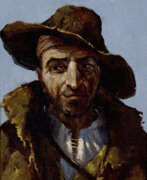

Frank Buchser was a Swiss painter. He is noted for his portraits of notable American figures of the post civil war period and for his works with Oriental themes.
His oeuvre comprises about 1000 works in oil, including about 300 full paintings. The remainder are mostly independent sketches, often executed with spiritedly rapid strokes, which show the artist's pronounced sense of color and light. The most important collection of his works are in the Kunstmuseum Solothurn (80 paintings) and the Kunstmuseum Basel (over 1000 oil sketches, drawings and watercolors and sketchbooks).
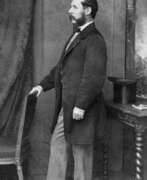

Percy Carpenter is a British painter.
Percy was the son of the artists William Hookham Carpenter and Margaret Sarah Carpenter, and studied painting at the Royal Academy. Between 1855 and 1860 he traveled to Singapore, Ceylon, and India, where he specialized in hunting subjects and painted several paintings. Some of Carpenter's works were lithographed and published in an album.
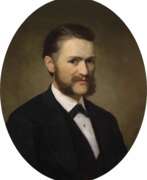

Eduard Charlemont was an Austrian painter.
After graduating from the Academy of Fine Arts Vienna, Charlemont traveled to many countries in central Europe and finally settled in Paris. In 1899 he won the gold medal at the Exposition Universelle, a World's Fair held in Paris.
Charlemont was also known for his murals. He painted three of the murals of the Burgtheater (the Austrian National Theatre in Vienna and one of the most important German language theatres in the world) totaling a length of about 55 meters.


Théodore Chassériau was a Dominican-born French Romantic painter noted for his portraits, historical and religious paintings, allegorical murals, and Orientalist images inspired by his travels to Algeria. Early in his career he painted in a Neoclassical style close to that of his teacher Jean-Auguste-Dominique Ingres, but in his later works he was strongly influenced by the Romantic style of Eugène Delacroix. He was a prolific draftsman, and made a suite of prints to illustrate Shakespeare's Othello. The portrait he painted at the age of 15 of Prosper Marilhat, makes Théodore Chassériau the youngest painter exhibited at the Louvre museum.
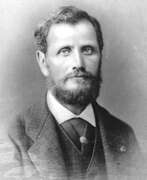

Stanisław Chlebowski was a Polish orientalist painter.
His travels in the Middle East and North Africa, where he lived and worked for many years, had a great influence on Chlebowski's work. His paintings often feature scenes of daily life in these regions, including depictions of markets, street scenes, and traditional clothing.
Today, Chlebowski's paintings can be found in many public and private collections, including the National Museum in Warsaw and the National Museum in Krakow.


Jan Ciągliński (Russian: Ян Францевич Ционглинский), a Polish Impressionist painter established in Russia, was born into a noble family in Warsaw on February 20, 1858, and died on January 6, 1913, in Saint Petersburg. He studied at the University of Warsaw before moving to Saint Petersburg in 1879, where he furthered his education at the Imperial Academy of Arts. Ciągliński was a pivotal figure in the Russian art scene, recognized as one of the first Russian Impressionists. His success in Russia was significant, though he remained less known in his native Poland.
Ciągliński's art was inspired by his travels across Europe, North Africa, and the Middle East, painting landscapes, often with oriental themes, symbolic images, figure compositions, decorations, and portraits. He was celebrated for his color work and the way he captured light. Among his notable students were Ivan Bilibin, Viktor Vesnine, Mikhail Matiushin, Pavel Filonov, and Yelena Guro, highlighting his influential role as an educator. Ciągliński was also one of the founders of "Mir Iskusstva" (World of Art), contributing significantly to its development.
Some of Ciągliński's works can be found in museums across Poland and Ukraine, a testament to his last will to donate his oeuvre to his homeland. His legacy is reflected in his diverse body of work that includes portraits of famous musicians such as Pyotr Tchaikovsky, Sergei Rachmaninoff, and Frederic Chopin, showcasing his connection to the music world.
For collectors and art and antiques experts interested in the intersection of Polish heritage and Russian Impressionism, Jan Ciągliński's work represents a fascinating study. Sign up for updates on new product sales and auction events related to Jan Ciągliński to explore more about this distinguished artist's contributions to the art world.
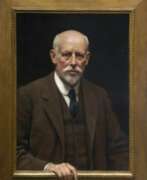

John Maler Collier was a British painter and writer. He painted in the Pre-Raphaelite style, and was one of the most prominent portrait painters of his generation. Both of his marriages were to daughters of Thomas Henry Huxley. He was educated at Eton College, and he studied painting in Paris with Jean-Paul Laurens and at the Munich Academy starting in 1875.
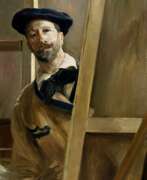

José Villegas Cordero was a Spanish painter, master of costume and genre scenes, who directed the Prado Museum from 1901 to 1918.
He studied at the School of Fine Arts in Seville and became known as a talented genre painter, noting interesting domestic scenes and accurately portraying the characters. Domestic painting at that time was very popular with the public. The artist also deals with the themes of the East, with great skill drawing pictures from sketches he made on a trip to Morocco.
In 1898 Villegas Cordero was appointed director of the Spanish Academy in Rome, and in 1901 he was appointed director of the Museo del Prado, the same museum that had once copied Velázquez's paintings himself while studying his art.
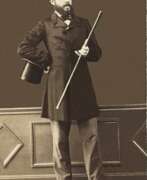

Charles Cordier, full name Charles Henri Joseph Cordier, was a French painter and innovative sculptor.
Charles Cordier studied in Paris at the École des Beaux-Arts and during his studies met a black sitter, a former slave, this meeting and predetermined his future creative life. In 1848, when slavery was officially abolished in all French colonies, Cordier exhibited his first plaster bust of a Sudanese man and received his first success.
For fifteen years, from 1851 to 1866, Cordier was the official sculptor of the Musée National d'Histoire Historique in Paris, creating a series of busts for the ethnographic gallery. Collecting images and types of various ethnic groups, the artist traveled extensively throughout Italy, Greece, Egypt, and Algeria, as well as France itself. Cordier's works are notable for their striking naturalism, and he also made spectacular use of the colors of various materials - marble of different shades, onyx and bronze, silvering and enamel.
Cordier openly defended the advanced for that time the idea of equality of all races. "Each race," he declared, "has its own special type of beauty. The most beautiful black man is not at all the one who looks more like a white man than anyone else."
Cordier also worked on the sculptural decoration of the Paris Opera House, the Louvre, and the Paris Town Hall. His son was the sculptor Henri Louis Cordier.
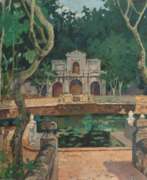

Henri Célestin Louis Dabadie was a French landscape and Orientalist painter.
He was a student of Jules-Élie Delaunay and Henri Michel-Lévy. After completing his studies, he devoted himself to Impressionistic landscape painting; primarily in Brittany. He alo painted harbor scenes in Rotterdam and Hamburg.
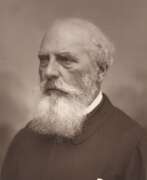

Charles Edouard De Beaumont was a French realist painter, watercolourist and lithographer.
Beaumont illustrated classic books of his era and was a regular and very popular contributor to Parisian periodicals. He is widely known for his humorous and sometimes satirical scenes of Parisian life.
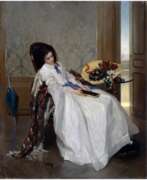

Gustave Léonard de Jonghe was a Flemish painter known for his glamorous society portraits and genre scenes. After training in Brussels, he started out as a painter of historical and religious subjects in a Realist style. After moving to Paris where he spent most of his active career, he became successful with his scenes of glamorous women in richly decorated interiors. His portrait paintings depict the lifestyle of the contemporary, fashionable city dwellers. Gustave de Jonghe painted many scenes of mothers with their children (usually a daughter) in intimate settings. Through the choice of pose, clothing and setting de Jonghe characterized the type of person represented. The title of his paintings often hinted at the narrative of the picture, such as Going to the ball. His pictures aimed to evoke the quiet joys of family life among the prosperous bourgeoisie. He worked in oil as well as watercolour. While some of his works are found in international museums such as the Hermitage and the Musée d'Orsay, most of his work is held in private collections.
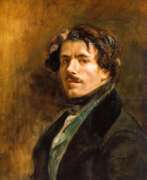

Ferdinand Victor Eugène Delacroix was a French Romantic artist, celebrated for revolutionizing the art world with his expressive brushstrokes and masterful use of color. Delacroix's art is characterized by its emotional intensity, vibrant colors, and dramatic themes, often drawing inspiration from historical, literary, and exotic sources. His innovative techniques and passion for expressive content made him a pivotal figure in the transition from the Neoclassical to the Romantic movement, influencing both the Impressionist and Symbolist movements that followed.
Delacroix's fascination with the exotic and the sublime led him to North Africa in 1832, where he captured the spirit and colors of Moroccan life, influencing his later works with themes of orientalism. This trip inspired masterpieces such as "Women of Algiers in their Apartment" (1847-1849), showcasing his ability to blend vivid color with intricate detail to evoke a sense of place and culture. His masterpiece, "Liberty Leading the People" (1830), is emblematic of his political engagement and artistic audacity, capturing the spirit of the 1830 revolution with a realism and fervor that resonated with the public and critics alike.
Delacroix's legacy extends beyond his paintings. As a muralist and lithographer, he left a significant mark on public and private art collections, with works displayed in prestigious institutions like the Louvre. His impact on the art world is seen in his influence on subsequent generations of artists, from the Impressionists' exploration of color and light to the Symbolists' fascination with dreamlike and exotic themes.
For collectors and experts in art and antiques, Delacroix represents not only a high point in Romantic art but also a bridge to modern artistic expressions. His works, housed in museums around the world, continue to inspire and captivate audiences with their intensity and beauty.
If you're passionate about Delacroix's contribution to art and culture, consider subscribing for updates on new product sales and auction events related to this iconic artist. Stay informed on opportunities to add a piece of art history to your collection.
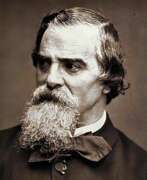

Narcisse Virgilio Díaz de la Peña was a French painter of the Barbizon school.
Díaz exhibited many pictures at the Paris Salon, and was decorated in 1851 with the rank of Chevalier (Knight) of the Légion d’honneur.


Nasreddine Dinet, originally known as Alphonse-Étienne Dinet, was a French Orientalist painter, renowned for his depictions of North African culture. He won a silver medal for painting at the Exposition Universelle in 1889 and founded the Société Nationale des Beaux-Arts along with notable artists like Meissonier and Rodin. Dinet's enchantment with North Africa led him to convert to Islam and change his name, reflecting his deep engagement with Arab culture and language, which set him apart from his contemporaries. His works, characterized as conservative and ethnographic, capture the nuances of local culture, from genre scenes to religious subjects. A prolific artist, Dinet also translated Arabic literature into French, contributing to cultural exchange.
His works are held in high regard, with examples like "The Snake Charmer" showing his technical prowess and cultural immersion. This painting and others are exhibited in prominent institutions such as the Art Gallery of New South Wales and the Musée d'Orsay. Dinet's understanding of Arab culture allowed him to portray women in spontaneous and dynamic ways, often employing a vivid color palette reminiscent of Fauvism. His legacy is preserved in the Nasreddine-Dinet Museum in Bou-Saâda and nearly 270 of his drawings are housed in the Louvre's Department of Graphic Arts.
Art collectors and experts recognize the significance of Dinet's work in bridging cultures through art. His contribution to Orientalist art provides a window into the traditions and stories of North African societies. For those interested in Dinet's work, private collections and auctions offer opportunities to acquire his art, with sales history indicating active interest in pieces like "Femmes arabes au cimetière."
For updates on new product sales and auction events related to Nasreddine Dinet, sign up for our newsletter. Stay informed on the latest opportunities to acquire works by this esteemed artist without superfluous flair, just the essential information for collectors and connoisseurs.
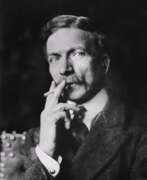

Jean Baptiste Discart was a French painter. He worked mainly in France and the Netherlands.
Jean Baptiste Discart in 1869, he enrolled at the Academy of Fine Arts Vienna, aged only fourteen. He would study there almost continuously until 1880. His primary professors were Leopold Karl Müller and Anselm Feuerbach. It was there that he first developed an interest in Orientalism.
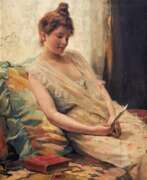

Auguste Frédéric Dufaux the Younger was a Swiss painter and sculptor.
Auguste's father, painter and sculptor Frédéric Guillaume Dufaux (1820-1872), taught him to draw, then he entered the Geneva School of Fine Arts, continued his studies in Paris and Florence.
Dufaux painted lovely female portraits in genre and intimate scenes, children playing, and many depictions of nude women, often near water. He lived in Paris from 1876 to 1891 and participated in the Salon des Artistes Français. From his travels in Egypt and Algeria, Dufaux brought back paintings of local exotic subjects. Dufaux also worked on a panoramic painting of the French Army's entry into Le Verrière and executed several sculptures of famous personalities.
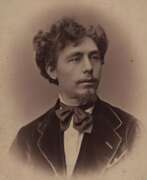

Ludwig Hans Fischer was an Austrian landscape painter, copper engraver, etcher and ethnologist. He was noted for his paintings of Oriental subjects, especially African and Indian women wearing traditional costume.
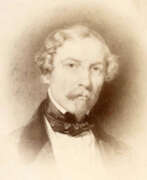

Eugène Flandin was a French artist and archaeologist. He is best known for his watercolor paintings of ancient monuments and landscapes in the Middle East, as well as his contributions to the field of Orientalist studies.
Flandin received his artistic training at the École des Beaux-Arts in Paris, where he studied under the painter Horace Vernet. He later went on to become a professor of archaeology and Oriental languages at the Collège de France.
Flandin's artistic work focused primarily on the ancient ruins and landscapes of the Middle East. Flandin was also a pioneer in the field of Orientalist studies, which focused on the art, culture, and history of the Middle East. He conducted extensive research on Persian and Ottoman art and architecture, and published several books on the subject.
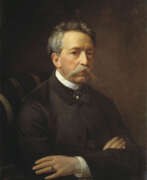

Prince Grigorii Grigorevich Gagarin (russian: Григорий Григорьевич Гагарин) was a Russian painter, illustrator, art researcher, and architect.
He was born into the family of a diplomat, Prince Grigorii Ivanovich Gagarin (1782-1837), who was soon sent to Italy to fulfill the duties of ambassador. Gagarin's house in Rome was the center of cultural life of the Russian diaspora, Alexander and Karl Brullov, Bruni, Shchedrin, Basin, Galberg were regular guests there.
Grigorii early showed a talent for painting, he took lessons from Brullov, after trips to the East he became fascinated by the art of Byzantium. Later, during his service in the Caucasus, he painted in this style the Sion Cathedral in Tiflis. Gagarin also successfully illustrated works of Russian writers, including Pushkin's poem "Ruslan and Lyudmila" and "The Tale of Tsar Saltan", in 1845 he published in Paris an album "Costumes of the peoples of the Caucasus" of 66 hand-colored lithographs.
In 1841 Gagarin was enlisted in the military service and participated in campaigns in the Caucasus. In addition to military duties, he worked a lot for the needs of the Caucasian cities. In Tiflis on his project was built a theater, he restored frescoes in the Sion Cathedral and in old Georgian monasteries.
In Russia, Gagarin's social circle included Zhukovsky, Pushkin, Odoyevsky. Grigorii Gagarin did a lot as vice-president of the Imperial Academy of Arts (1859-1872), trying to reform it in the spirit of the time, founded the Museum of Antiquities. In 1880, Gagarin was made an obra gofmeister of the court of His Imperial Majesty.


Karl Wilhelm Gentz was a German painter of the second half of the 19th century. He is known as a successful master who specialized in historical and ethnographic-genre painting with orientalist themes.
Gentz traveled to Morocco, Egypt, the Sinai Peninsula and other eastern regions, which influenced his style and fascination with Orientalism. The artist reproduced picturesque scenes, conveying the character of the area and its inhabitants with impressive beauty and truthfulness. He also created paintings with biblical and religious content, adhering to the realist trend. In the last years of his life, Gentz was a professor of painting and a member of the Royal Prussian Academy of Arts in Berlin.
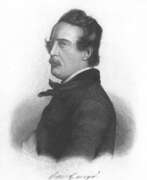

Otto Georgi or Friedrich Otto Georgi was a German Orientalist painter who received his artistic education from his father, Friedrich Traugott Georgi (1783-1838). Inspired by his participation in an Egyptian expedition, Georgi painted mostly landscapes with Oriental motifs, for which he earned the nickname "Georgi of the East.
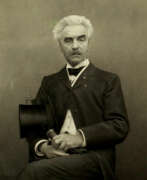

Jean-Léon Gérôme was a prominent 19th-century French painter, a representative of the academic school of painting. His paintings are notable for their impeccable composition and exquisite colour palette.
Jean-Léon Gérôme did not accept the work of the Impressionists, whom he considered to be the ignominy of French art. This has earned him a controversial reputation as a fierce supporter of academism and a persecutor of new movements.
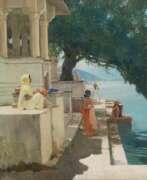

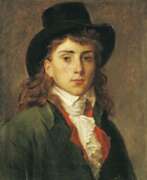

Antoine-Jean Gros was a distinguished French painter, renowned for his contributions to neoclassical and pre-romantic art. Born on March 16, 1771, in Paris, Gros embarked on his artistic journey at a young age, initially learning from his father, a miniature painter. His talent blossomed under the tutelage of Jacques-Louis David, one of the era's most revered artists. Antoine-Jean Gros's work gained significant acclaim with his portrayal of Bonaparte, particularly in "Bonaparte at the Pont d'Arcole" and "Bonaparte Visiting the Plague Victims of Jaffa," which showcased his ability to blend historical narrative with dramatic intensity.
Throughout his career, Antoine-Jean Gros's paintings captured the essence of significant historical moments, often featuring Napoleon Bonaparte. His works are celebrated for their dynamic compositions and emotional depth, earning him a place among the pioneers of the Romantic movement in art. Despite achieving fame, Antoine-Jean Gros struggled with the artistic transition during the post-Napoleonic era, eventually leading to his tragic demise in 1835. His legacy, however, continues to influence the realms of neoclassical and romantic art, underscoring his pivotal role in the transition between these two significant art movements.
For collectors and experts in art and antiques, Antoine-Jean Gros's oeuvre offers a fascinating glimpse into the evolution of 19th-century French painting, embodying the intersection of historical narrative and artistic innovation. His works, housed in prestigious institutions like The Louvre and the Palace of Versailles, remain pivotal in understanding the artistic landscape of his time.
If you're a collector or an expert in art and antiques and wish to stay updated with the latest news and events related to Antoine Jean Gros's works, consider subscribing for updates. This subscription will ensure you're informed about new product sales and auction events featuring Gros's masterpieces, helping you stay connected with the evolving market and opportunities to enrich your collection.
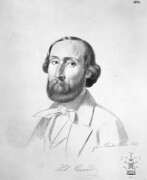

Carl Johann Grund was a German and Austrian genre painter and portraitist.
He studied at the Academy of Fine Arts in Vienna and traveled throughout the Alpine countries and Italy. Johann Grund's works are in the collections of the museums of Karlsruhe, Mannheim, and Vienna.


Émile Coriolan Hippolyte Guillemin was a French sculptor of the Belle Époque. He worked in bronze. He studied under his father, the painter Auguste Guillemin, and under Jean-Jules Salmson. He showed work at the Salon of Paris from 1870 to 1899, and in 1897 received an honourable mention there. In 2008 his 1884 bronze sculpture Femme Kabyle d'Algerie and Janissaire du Sultan Mahmoud II (Kabyle woman from Algeria and Janissary of Sultan Mahmound II) sold for $1,202,500 plus auction fees in New York to a private collector through Sotheby's Auction House.
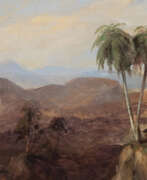

Charles Hamilton, active between 1831 and 1867, was a talented Orientalist painter. Although exact details of his life and work are unavailable, his art profile leaves a mark on art history.
It is known that Hamilton was a recognised master in his field and worked in a variety of genres. His art attracts the attention of collectors and experts, and his works are still highly valued at auctions.
For those who are interested in Orientalist art and want to know more about Charles Hamilton's works, his paintings are of particular interest. Each of his works is a reflection of the era and the artist's individual style, making them significant in the context of art history.
We invite anyone interested in unique artworks and cultural relics to subscribe to our updates. We will keep you informed of new sales and auctions related to the works of Charles Hamilton.
